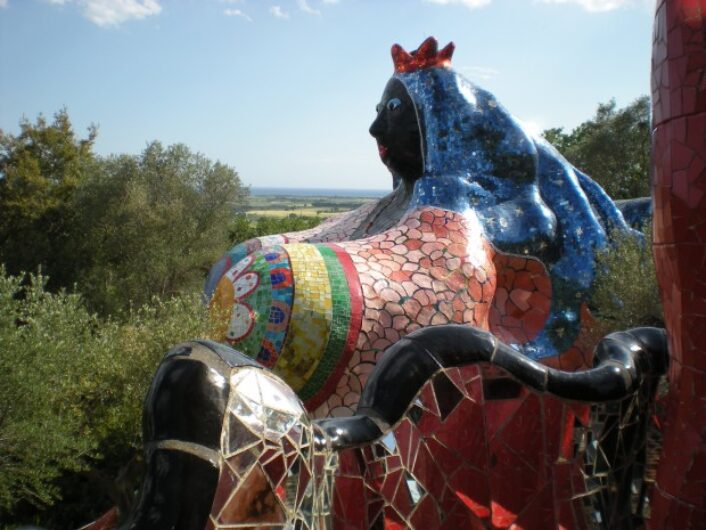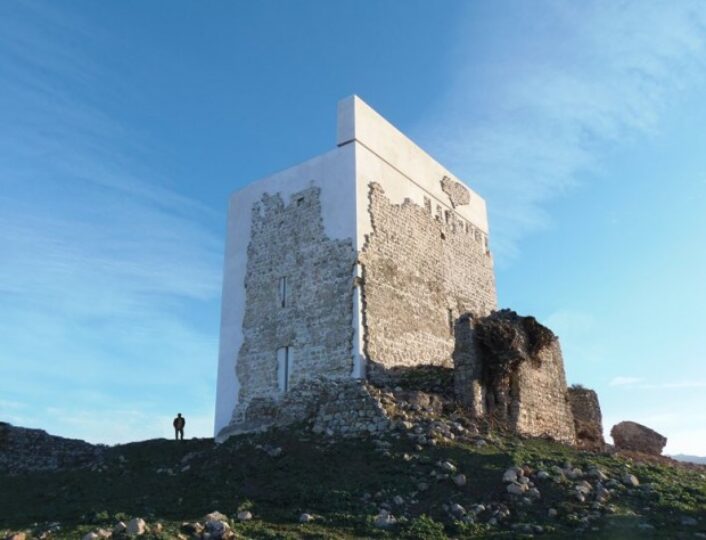Architecture
Finishing the Sagrada Familia Basilica
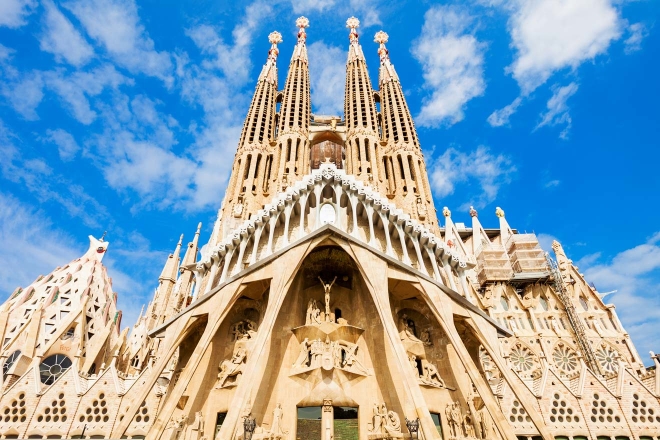
The legendary church.
Image courtesy of: Miss Tourist
The story behind Sagrada Familia Basilica is a long and complicated one. The first stone was laid in 1826, and this technically makes the building 137 years old. However, it isn’t complete… at least not by the founding architect’s vision. The famous Catalan architect, Anton Gaudi was already a force in Spain when he designed the iconic structure. Deeply religious, this was meant to be Gaudi’s masterpiece.
Gaudi was ahead of the times in terms of design. His eleven works in and surrounding Barcelona all show how he employed a whimsical building technique to mimic nature’s beauty.
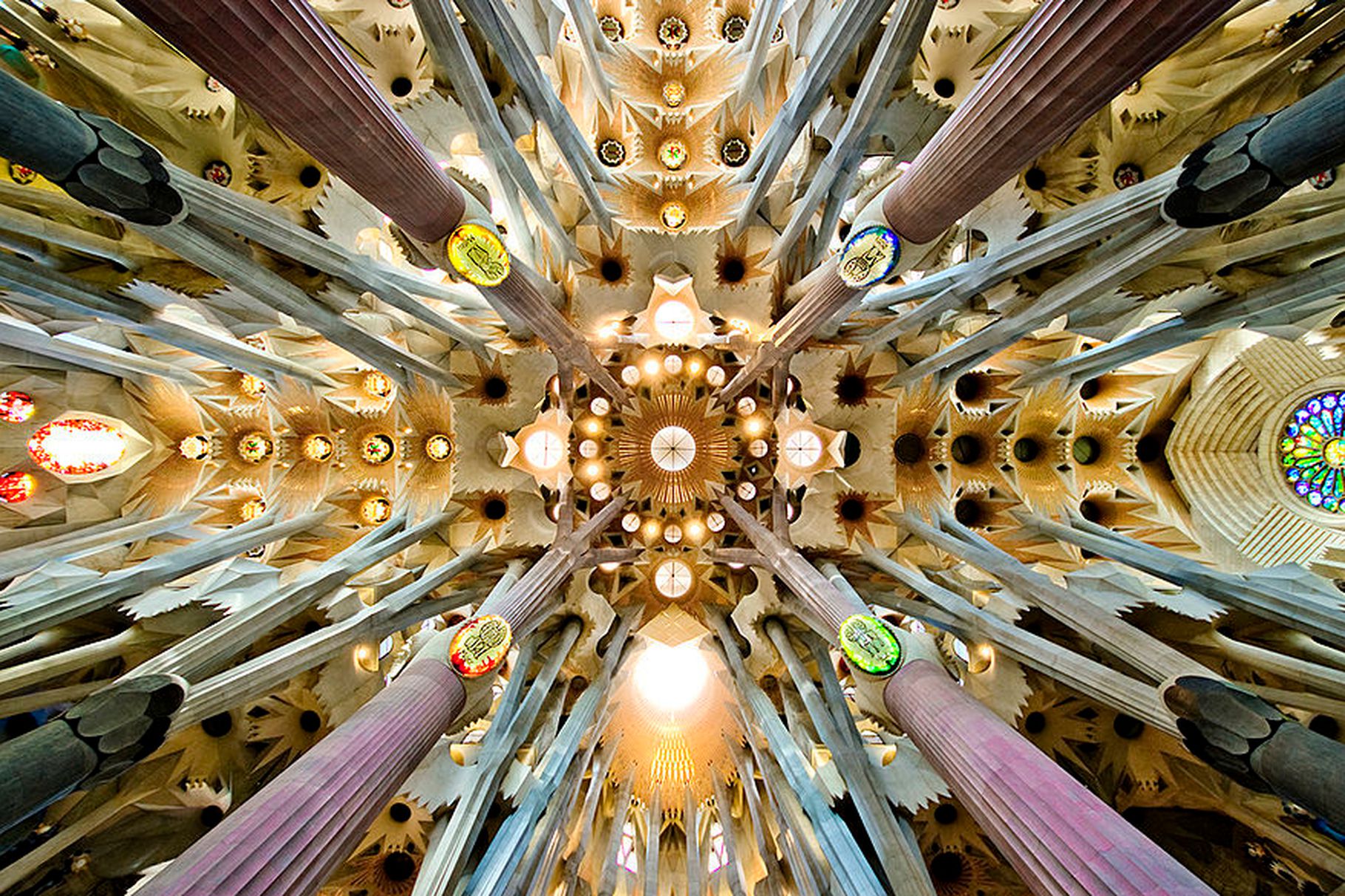
Gaudi envisioned the cathedral as a “Bible built in stone.”
Image courtesy of: The Verge
A devout Catholic, when Gaudi received the commission to build the Sagrada Familia church, he drew plans for a towering structure with eighteen spires representing the 12 Apostles, four evangelists, the Virgin Mary, and Jesus Christ.
Believing that the deepest way to speak with God is to be in nature, the 31-year-old designed the interior to replicate a naturalistic “forest of stone”. Enormous pillars stretch from the floor to the ceiling where twisting branches intertwine to form an ornate canopy.

An early image of the cathedral on the outskirts of the city.
Image courtesy of: 99% Invisible
The construction was quite slow due to the complicated technical designs, and because the cathedral’s construction relied solely on private donations. As a result, Gaudi realized that he would not live to see the completion of his masterwork. Thus, he drew up detailed architectural plans and scale plaster models of each of the cathedral’s sculpted facades and towering spires. When Gaudi was tragically killed in a tram accident, his associates were able to continue building based on the drawings and detailed models that were left behind.
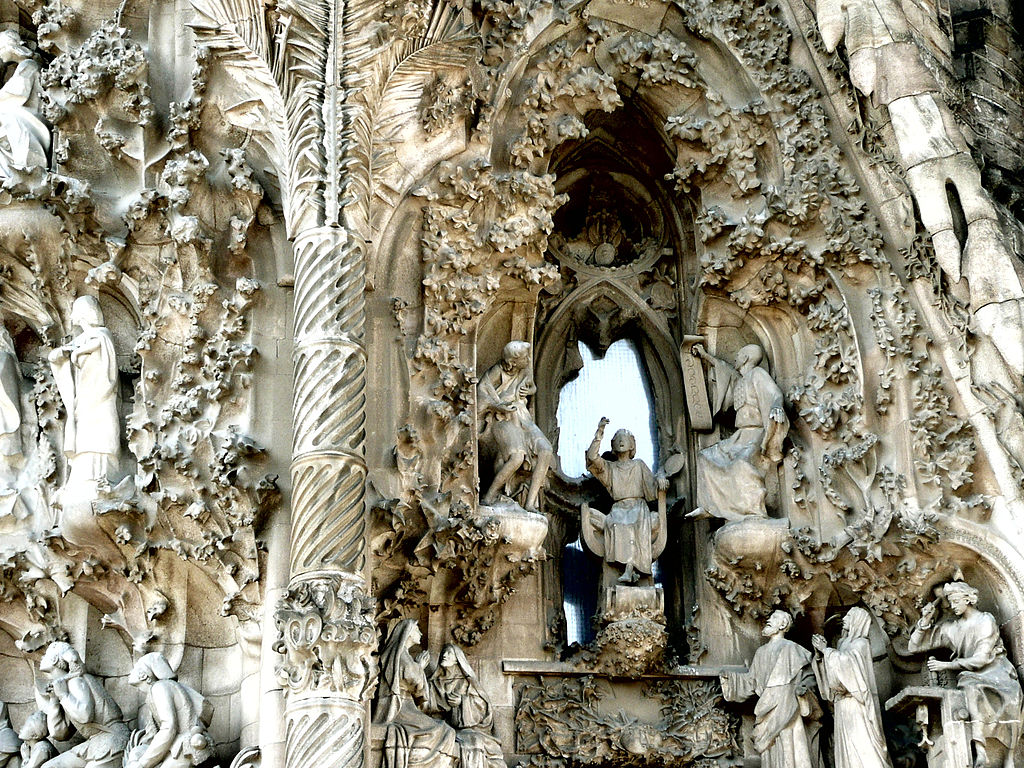
Gaudi was as much a sculptor as an architect; so he designed the entire facade be filled with stone sculptures depicting various biblical scenes. Eventually, the wall became very crowded and cluttered… although some say it is “full of life.”
Image courtesy of: 99% Invisible
Sadly though, most of Gaudi’s models and drawings were destroyed by anarchist revolutionaries a short ten years following his death. For the past 130 years, architects have labored to try and piece together Gaudi’s vision and pay proper homage to the mastermind himself.
Gaudi devoted forty years to the Sagrada Familia, fully committing the last years of his life to the project. He slept at the construction site… and cared little about anything other than the structure.

At completion, the Sagrada Familia will have the tallest church spire in the world at 566 feet.
Image courtesy of: Guide Posts
Sadly, following Gaudi’s sudden and tragic death, the Spanish Civil War erupted and revolutionaries targeted churches as symbols of institutional oppression. It was during this time that the structure was attacked and that the architect’s plaster models were destroyed. This caused an obvious slow down in the progress; and the decades-long fascist rule of Franco didn’t help matters.
It was only when the New Zealand-born Mark Burry was recruited to be an instrumental force in finishing Sagrada Familia and remaining true to Gaudi’s vision that progress began. He was shown boxes containing fragmented remains of Gaudi’s plaster models in order to “reverse engineer the models”. Burry spent thirty years on Sagrada Familia and is responsible in bringing the project to the 21st-century.
And now, the 137-year-old construction project is extremely high-tech. Due to many technological and engineering advances, Jordi Fauli, the basilica’s current chief architect, is positive that Gaudi’s masterpiece will be completed in 2026… the 100th anniversary of Gaudi’s death!

